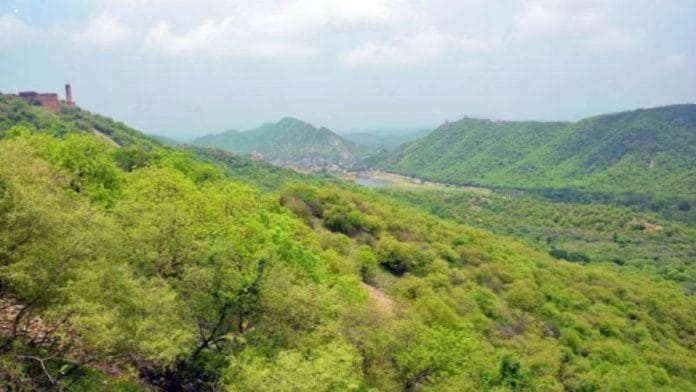New Delhi: The Supreme Court has ruled against a complete prohibition on mining in the Aravallis for now, making it clear that imposition of a full ban in the area could lead to illegal mining, creation of landmining mafia and criminalisation.
The three-judge bench led by Chief Justice of India (CJI) B.R.Gavai, however, barred grant of new mining leases.
The bench also made it clear that mining activities would still be prohibited in protected areas, including wildlife sanctuaries, tiger corridors, and economically sensitive zones. The lone exception would be made in cases of critical, strategic and atomic minerals.
Undisputedly, the Aravalli Hills and Ranges exhibit ecological fragility, and include significant biodiversity, the court said, adding that the hills act as a green barrier which prevents desertification or degradation of fertile land in the Indo-Gangetic plains, Haryana and western Uttar Pradesh.
In the 28-page ruling delivered Thursday, a masterclass on the geographical importance of the Aravallis, the court noted: “The Aravalli Range… is one of the oldest geological features on planet Earth. It is one of the oldest fold mountains in India. It is rich in wildlife, flora and fauna, and significantly influences the climate and biodiversity across North India.”
The bench, also comprising Justices K.Vinod Chandran and N.V.Anjaria, directed that while mining activities already in operation would continue, no new mining leases can be granted until a Management Plan for Sustainable Mining (MPSM) is carried out, as was done in the Saranda forest area in Jharkhand.
“If such an MPSM is carried out for the Aravalli Hills and Ranges, it can also identify the areas where sustainable mining activities could be permitted,” the court said, adding that the Ministry of Environment should prepare such a plan in coordination with expert bodies like the Indian Council of Forestry Research and Education (ICFRE), as was done for Saranda.
Also Read: Where does Aravalli end? Lack of clarity leads to rampant mining; furious Haryana villagers
The Saranda chapter
On 13 November, the Supreme Court had ruled that the Saranda forest should be declared a wildlife sanctuary in light of overarching concerns about illegal mining and ecological conservation.
In the present case too, the court recalled its Saranda ruling and noted that the environment ministry had got a study done by the ICFRE, based on which a plan was prepared for sustainable mining in certain districts of Jharkhand.
After the ICFRE’s geo-referenced ecological assessment, which entailed digital mapping, suitable areas were identified and zones requiring ecological protection were earmarked, so that conservation of biodiversity was a priority in these places.
The bench in the Saranda case also included CJI Gavai and Justice Chandran.
Asserting that the MPSM will provide adequate data on the basis of geo-referenced ecological assessment while identifying areas with wildlife and eco-sensitive zones which necessitate conservation, the court added that the management plan would also provide data on how sustainable mining should be conducted.
Lack of definition of Aravallis & court rulings
In the present case, the SC clubbed two similar matters—MC Mehta vs Union of India and T.N. Godavarman Thirumalpad vs Union of India—before it which related to the Aravallis.
While the former related to mining activities in Haryana, the latter was listed before the court in January 2024 and was confined to mining activity in Rajasthan. To avoid conflicting orders in both cases, the pleas were clubbed and placed before the CJI.
On 10 January last year, the court had directed the Central Empowered Committee (CEC), an expert committee that usually acts as a watchdog on environmental issues, to examine the issue of mining in the Aravallis, and whether the same can continue, after consultation with geology experts.
Among the many recommendations given by the CEC in its March 2024 report, mapping of the entire Aravalli Range was suggested to be carried out by the Forest Survey of India (FSI), within a stipulated timeline of six months.
It also suggested an analysis of mineral extraction levels, available infrastructure and a look at environmental concerns. “Till this exercise is completed, no new mining leases or renewal of old mining leases should be allowed in the Aravalli Hill Ranges,” the CEC stated in its report.
Significantly, the CEC said that mining should be prohibited in certain protected areas including tiger reserves which have been declared so under the Wildlife Protection Act, 1972, and eco-sensitive zones, which refer to lands within 10 km radius of national parks and sanctuaries.
On 9 May, when the court again took up the matter, it said that mining activities in the Aravalli Hills and Ranges needed to be addressed jointly by the environment ministry and the four states of Delhi, Gujarat, Rajasthan and Haryana through which the hills run.
Interestingly, the court noted the lack of a commonly-agreed definition of the Aravallis, since different states had distinct definitions. It then directed constituting a committee for providing a uniform definition of the hills and ranges.
On 3 October, this court-appointed committee suggested a very broad definition of the Aravallis, at odds with the one given by the FSI and the amicus in this case, which included all the hills below the height of 100 metres and in turn would lead to mining in more areas in the Aravalli Hills and Ranges.
Agreeing with the committee’s definition in the present case, the court noted that, except in cases of critical, strategic and atomic minerals, mining activities would still be prohibited in inviolate areas. It also appreciated the panel for doing a commendable job and prohibiting mining in core areas.
(Edited by Nida Fatima Siddiqui)
Also Read: Faridabad farmhouses vs Aravallis isn’t over. It’s a war that has just begun






